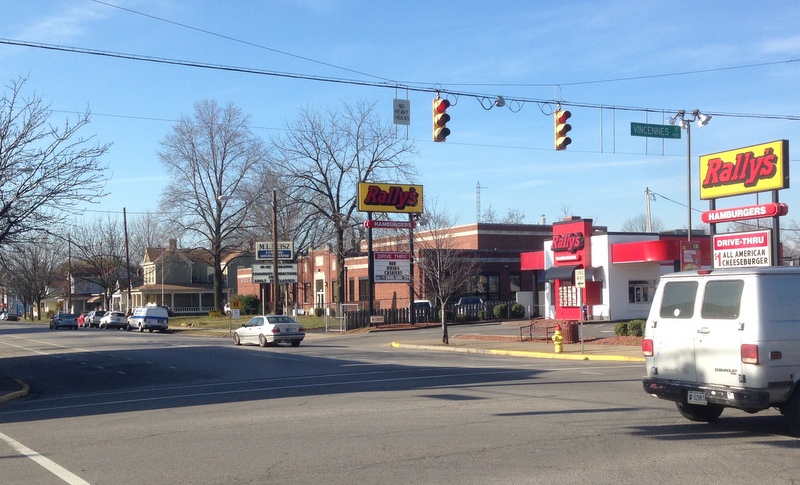
It’s been a week since the Mt. Tabor Road neighborhood was spoon-fed details about road-building decisions already reached within the spacious confines of John Rosenbarger’s self-satisfied aerie.
Following are a few random observations.
First, a resident who grasps the underlying essence of the controversy, as quoted by the News and Tribune’s Jerod Clapp.
Mt. Tabor Road, Klerner Lane concerns linger in New Albany; Residents raise issues.
… “I’m really hoping all the bluster will go away and we can have these conversations,” Turner said. “We all want a safe road, but we don’t want all that industrial traffic.”
To reiterate, from inception the Mt. Tabor “project” was intended to add traffic to a neighborhood road regarded by the powers that flee as an arterial. Make the arterial easier to navigate, and what happens? Drivers fill the available space and drive faster.
Only later, reeling from criticism, did the city’s spin doctors get to work in earnest, yielding the Mt. Tabor Road Restoration and Pedestrian Safety Project. That’s a bushel of syllables, intended to give the arterial enhancement an Orwellian touch, and coming from people who rarely read.
How did they find those spiffy words?
By now, it should be clear how these projects work. To fund roadwork is to maintain the system of political patronage with the same-old construction and paving interests. To do so with federal 80-20 funding matches is better, because then someone else is priming the pump, and local monies that might go toward infrastructure improvements can instead be diverted to water slides and mobile concerts.
The aspect of federal funding means that roadwork like this is planned years in advance, almost never with public participation, which would require talking to real people and engaging with them.
Invariably, when proposed changes finally bubble to the surface (as these did in 2013), there is a cycle of opposition, typically mollified with minor changes, most of them pre-determined as expendable, as with the removal of the roundabout.
But you see, there’s no way a euphemism like the Mt. Tabor Road Restoration and Pedestrian Safety Project cannot happen, once the federal funds have been committed. If someone else pays, the money must be used, whether to grease an arterial or construct a subway to Xanadu.
Beaks must be kept wet. This is the cycle of political life, and it need not be connected to master plans or larger truths. It simply is.
Back to Clapp’s coverage.
… (Al) Knable said he understood the concerns of residents who don’t want more industrial traffic traveling to or from Grant Line Road. He said that could be an issue, but one the city council could resolve through reviewing the laws it has enacted.
“It might make this a more likely thoroughfare for some traffic,” Knable said. “It might be more attractive for trucks, so we may have to go back and rewrite some of our ordinances on truck traffic.”
I’m glad CM Knable said this. Might the council’s attention be extended to whatever ordinance resulted in this sign hanging ignored at the intersection where no one at City Hall cares to protect the safety of pedestrians?


How many heavy trucks pass beneath this sign every single day?
Just saying, Doc. Just saying. Now, some love to the C-J …
New Albany’s Mt. Tabor road project draws ire, by Madeleine Winer (Courier Journal)
Plans to restore Mt. Tabor Road in New Albany have angered residents that live near and draw on the corridor.
… and finally, a prescient thought entirely lost in the hubbub, as offered by a 93-year-old homeowner on Mt. Tabor Road in a letter to the editor of the N & T.
Hundreds of trees will be lost.
If the members of our lost Tree Board turn up anywhere, can someone ask them about this?











